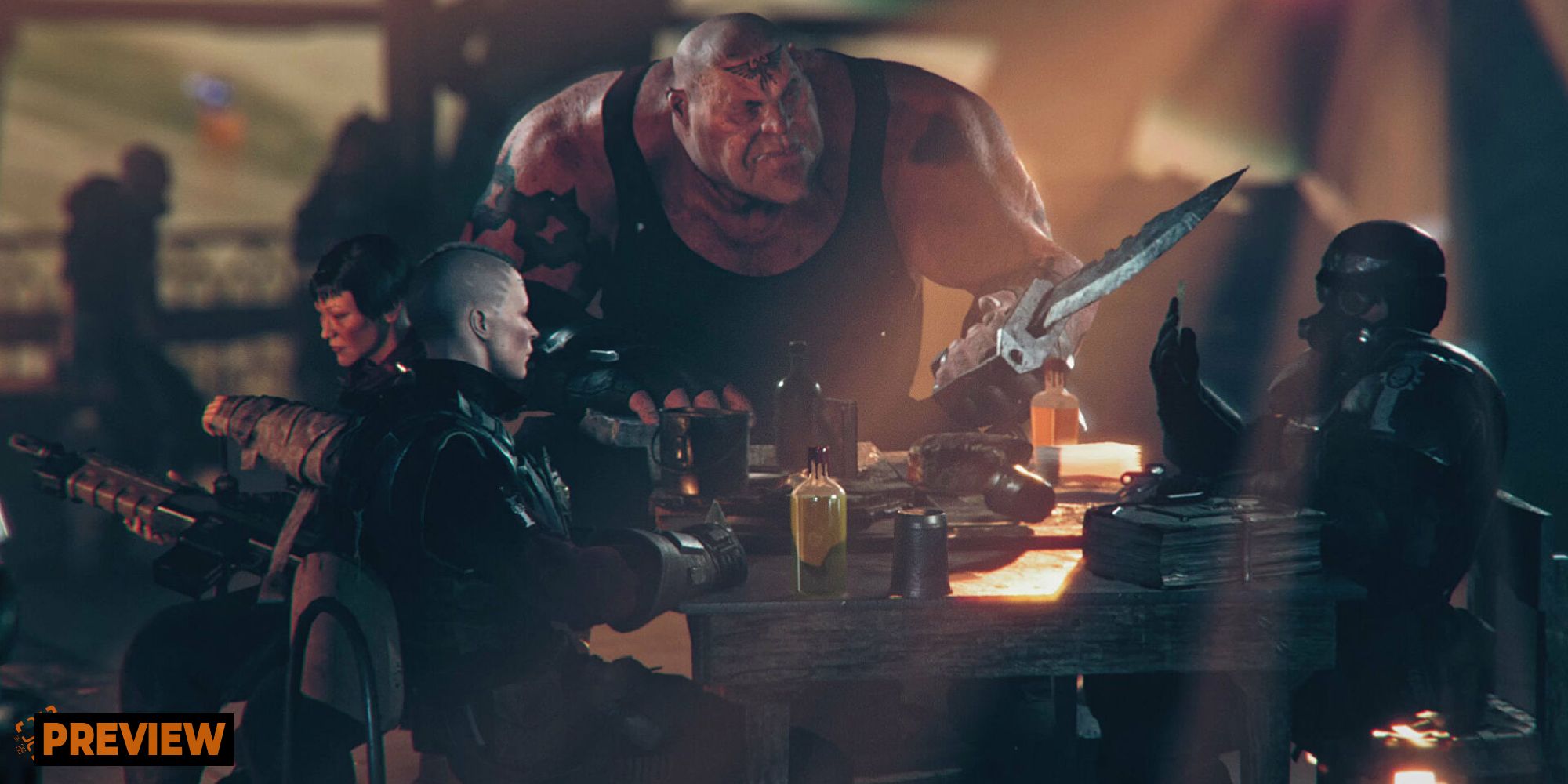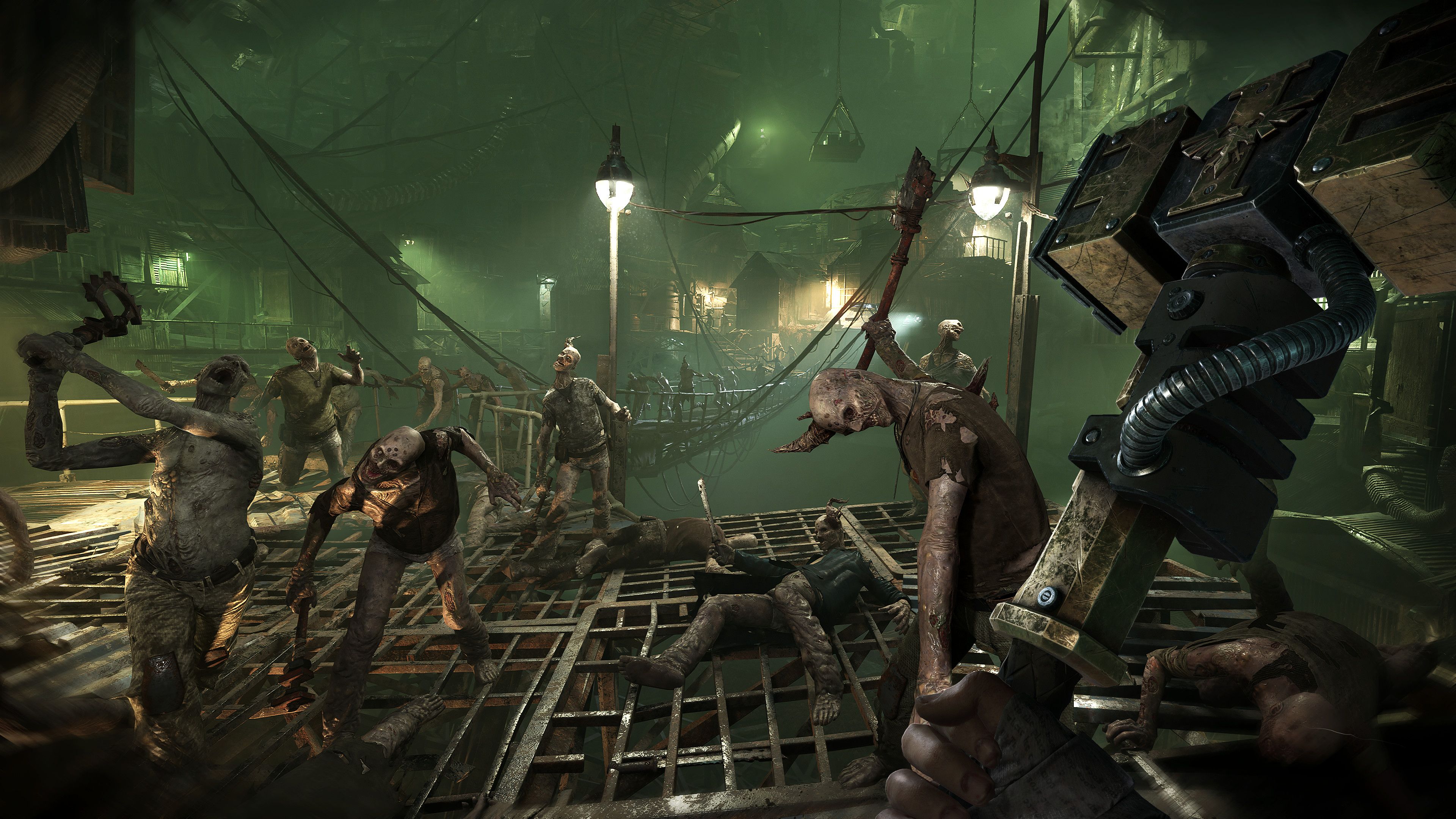Fatshark has had phenomenal success with Vermintide 2 over the last several years, so it was no surprise when the studio announced it was developing a Warhammer 40k follow-up. ‘Vermintide in Space’ is an enticing enough proposal, but after playing the game and speaking with head of design Victor Magnuson at this weekend’s Summer Game Fest even in Los Angeles, I’m certain that description doesn’t do it justice. Darktide seems to be a huge step forward for both Fatshark and the Left 4 Dead-like genre. The lessons the studio learned from the success (and missteps) of Vermintide 2 has shaped Darktide into not just a phenomenal co-op shooter, but one built with long-term support in mind.
While Darktide improves on the Vermintide 2 formula in many ways, the core gameplay is pretty familiar. A team of four players fight their way through twisting, futuristic levels while fighting off hordes of poxwalkers, deathguard, and cultists, occasionally stopping to solve small puzzles, and proceeding to a last-stand encounter before rushing off to an extraction point. The big difference you’ll notice right away is how much more focus there is on ranged combat. Arrows and bullets are a luxury in Vermintide 2, but here, ammo is practically unlimited. I used a single-shot rifle that had a capacity of 500 rounds and never even got close to running out. Magnuson says that the team spent as much time refining ranged combat for Darktide as they did perfecting melee combat in Vermintide, and it really shows. He expects most players will find themselves using ranged weapons 50 to 60 percent of the time.
That’s not to say melee has been neglected though. My character was equipped with 40k’s iconic chainsword, a light one-handed weapon that could make short work of the zombie-like Poxwalkers, or I could rev it up and charge a heavy attack to slice through the armor of deathguards. That kind of versatility is new to Darktide, and represents a new focus on stronger weapon identity.
Vermintide 2 has a nice range of weapon archetypes, but there’s really no difference between one sword and another. In Darktide, every weapon rolls with random values to all of its stats, like damage, range, and speed. The more rare a weapon is, the more stat lines have the potential to high roll. Magnuson says this, along with traits, will make different weapons of the same archetype feel unique, as well as give players something valuable to pursue. You’re not just looking for high-level equipment for the sake of pushing higher difficulties in Darktide.
While I wasn’t able to see any of the character sheets, skill trees, or hub vendors during my play session, Magnuson described some big changes to the way you obtain new gear. Chests are making a return, but there will also be several deterministic ways to earn gear to. Magnuson says there will be a shop with a rotating inventory where you can buy gear with earned currency, but there’s also a system that involves completing a quest objective to unlock specific gear. He also described an extract/imbue system that will let you take traits off of one piece of gear and put it onto another one.
Another big change from Vermintide is that you no longer play a specific character like Bardin or Kerillian. Instead, you can choose from one of four classes and create your own character. Within the character customizer, there are six voice options for each class, three masculine and three feminine. This means you’ll hear completely different voices every time you play, depending on the parties you join. It also means you can have multiples of the same class in your party. If you want to play with four giant Ogryn, you can.
What excites me the most about Darktide is something that can’t be captured in a trailer or demo, but will almost certainly prove to be the game’s strongest quality. Magnuson spoke about the way that Vermintide 2 evolved into a live-service game over time and the challenges that posed. Because it wasn’t designed as a living game from the start, the team struggled to design on top of what they already had. The reason they were never able to add more characters, Manguson says, is because of the way VO was programmed. It wasn’t possible to break apart the dialogue to add in a new voice without literally re-recording all of it. When it came to the missions themselves, they were also made in a static way that prevented any real iteration or experimentation.
Darktide has been designed as a live-service game from the very beginning, and Magnuson believes that it will be a more dynamic and replayable game because of it. He explains that the team took a modular approach to everything from VO to level design so that elements could be added, removed, and rearranged easily. In Darktide, missions are separate from zones, meaning you can run multiple mission types on the same map and take slightly different paths each time.
Magnuson says that Darktide’s zones are stacked on top of each other and that players will be able to identify when sections of different zones overlap. He describes standing on a bridge and looking down to see a pathway you walked through on a different level. That kind of interconnectedness can make the play spaces feel more fully realized and authentic, but they also give the developers the opportunity to move and rearrange segments of each zone to create new paths and add variety to the game.
Magnuson explained a number of aspects of the game that have this modular, moldable quality. Not only can different missions be played on the same map, but each mission will have its own set of modifiers that change the experience but increase rewards. One modifier might cause a power failure in the zone, forcing your team to fight your way through each horde in the dark.
Darktide also has a new approach to the Grimoire mechanic from Vermintide 2, which was a hidden collectible that offered greater rewards but increased the difficulty of the run. To avoid creating “optimized paths”, Darktide’s version of the Grimoire is an optional side mission that appears as a modifier. The side mission objectives will change, and they won’t necessarily be found in the same area multiple times, even if your mission takes place in the same zone. All of these features are designed to keep things fresh and make the game more replayable while giving the developers more room to iterate and grow the game over time.
I still have a lot of questions about Darktide as we wait for the September 13 release date. I wasn’t able to see how skill trees have changed, what kind of traits weapons can roll with, or how the armor system works. Magnuson also couldn’t talk specifically about monetization, though he said Darktide will have a new cosmetic system, expansion content, and possibly some kind of battle pass. We’ve also only seen a handful of enemy factions so far, and Magnuson promises there are more that will be revealed in the lead-up to launch. I do know enough to be excited though. After seeing how Darktide plays and speaking to Magnuson, it seems like Fatshark has learned all the right lessons from Vermintide 2, and has built Darktide to improve on an already winning formula.


